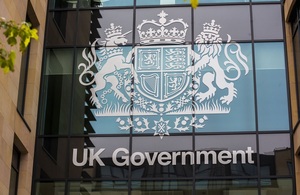Record number of Scots in work
May Labour Market Statistics for Scotland show Scotland continues to do well as part of the UK.

Unemployment in Scotland fell by 18,000, to 178,000 in the period January to March 2014, according to Office for National Statistics (ONS) data released today. The Scottish unemployment rate is 6.4 per cent, which is below the average of 6.8 per cent for the whole of the UK.
The labour market statistics also show employment in Scotland has increased by 29,000 over the three months January to March 2014. The number of those in employment in Scotland now stands at 2,585,000.
Scottish Secretary Alistair Carmichael said:
Scotland is doing well as part of the UK. In the first quarter of 2014 unemployment in Scotland fell by 18,000 and employment rose by 29,000. It is also very good to see the number of Scots claiming jobseekers allowance has now fallen for 18 straight months and is at a six and half year low.
Being part of the large UK single market gives us stability and certainty and helps create jobs and opportunities. We now have a record number of Scots in work, wages rising, inflation falling and the highest employment rate of all nations in the UK.
As our economy recovers and businesses are becoming more confident it is good to see they are employing more and more Scots. Businesses - especially our small and medium size companies - are the driving force of this recovery. We will do everything we can to create the conditions needed to support their growth, creating more sustainable jobs especially for our young people and long term unemployed.
Headline Statistics for the January to March 2014 quarter:
-
Employment in Scotland increased by 29,000 over the quarter, and increased by 67,000 over the year, to stand at 2,585,000.
-
The Scots employment rate rose by 0.7 per cent over the quarter to 73.5 per cent. The rate is above the UK average of 72.7 per cent.
-
Unemployment in Scotland fell by 18,000 over the quarter and fell by 21,000 over the year. The level now stands at 178,000.
-
At 6.4 per cent, the Scots unemployment rate is below the UK rate as a whole at 6.8 per cent.
-
Economic Activity increased by 12,000 over the quarter and now stands at 2,763,000. Also, the Economic Activity rate increased over the quarter to stand at 78.6 per cent.
-
In April 2014, the number of people out of work and claiming Jobseeker’s Allowance (JSA) was 103,000.
Latest Data for Scotland
Employment
The Labour Force Survey (LFS) indicates that the number of people in employment in Scotland from January to March 2014 was 2,585,000. Employment was up by 29,000 compared to the previous three months, and was up by 67,000 compared to the same quarter last year. The employment rate was up by 0.7 p.p. on the previous quarter, and it was up by 1.7 p.p. compared to the same quarter last year, at 73.5 per cent. In comparison, the Scottish employment rate is above the UK average.
Unemployment
Unemployment in Scotland was down 18,000 over the quarter January to March 2014, to 178,000. The level was down 21,000 compared to the same quarter last year. The unemployment rate was down 0.7 p.p. on the previous quarter at 6.4 per cent, which is down 0.9 p.p. over the year.
Claimant Count
The claimant count in Scotland, based on the seasonally adjusted number of people claiming Job Seeker’s Allowance (JSA), fell by 2,000 from March to 103,000 in April 2014. The level is down by 33,300 on April 2013. The claimant count rate is down 0.1 p.p. over the month at 3.7 per cent, and is down 1.2 p.p. over the year.
Economic Activity
The number of economically active (defined as those in employment or ILO unemployed, and seasonally adjusted) in Scotland in the January to March 2014 quarter was 2,763,000. This was up 12,000 on the previous quarter, and is up 46,000 on the same point a year ago. Among those aged 16-64 the economic activity rate was 78.6 per cent, up 0.1 p.p. on the previous quarter, and up 1.0 p.p. over the year.